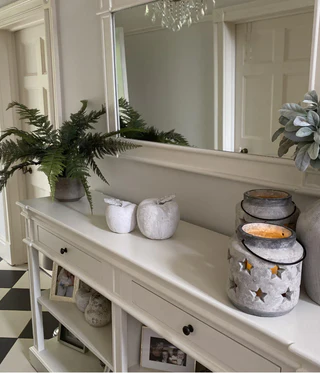Britain has a long and fascinating history when it comes to furniture design and craftsmanship. From the Neolithic stone furniture of Skara Brae to the opulent furnishings of medieval castles and the sleek, modern pieces of today, British furniture has evolved and adapted over the centuries to meet the changing needs and tastes of its users. In this article, we'll take a journey through time and explore some of the most significant milestones in British furniture history.
Skara Brae and Stone Furniture
Located on the remote Isle of Orkney in Scotland, Skara Brae is a Neolithic settlement that dates back to around 3100 BC, making it older than both Stonehenge and the Great Pyramids of Egypt. The settlement includes the remains of eight stone houses, each with its own hearth and stone furniture.
One of the most impressive pieces of furniture found at Skara Brae is the stone dresser, which was likely used to display artefacts and show off the wealth and standing of its owners. The dresser sits facing the main entrance to the house, indicating that it was an important part of the household's daily life. Other stone furniture found at Skara Brae includes stone beds, shelves, and cupboards, all of which were carved from local sandstone.
The fact that Skara Brae's stone furniture has survived for over 5,000 years is a testament to the skill and craftsmanship of its Neolithic inhabitants. Despite being made from one of the most durable materials available, the furniture at Skara Brae was still subject to wear and tear, as evidenced by the many repairs and modifications that have been made over the years.
Augustine at Canterbury Cathedral
Moving forward in time to the 6th century AD, we find Augustine arriving in Britain as a missionary from Rome. Augustine was sent to England by Pope Gregory the Great to convert the Anglo-Saxon pagan kings to Christianity. He established a cathedral in Canterbury and became the first Archbishop of Canterbury.
One of the most interesting pieces of furniture associated with Augustine is his chair, which can still be seen today in Canterbury Cathedral. The chair is made from oak and dates back to the late 12th or early 13th century. It is believed to have been used by Augustine himself, as well as by subsequent archbishops of Canterbury. The chair's intricate carving and rich history make it one of the most important pieces of furniture in Britain.
Berkeley Castle's 400-Year-Old Bed
Moving forward in time once again, we come to the 17th century and the opulent furnishings of Berkeley Castle in Gloucestershire. The castle's Great Bed is one of the most famous pieces of furniture in Britain, measuring an impressive 10 feet wide and 11 feet tall.
The bed dates back to around 1590 and was likely made for the castle's wealthy owner, Sir John Berkeley. It is believed to have been used as a guest bed, with up to four people sleeping in it at once. The bed is adorned with intricate carvings and is said to have inspired Shakespeare's play "Twelfth Night".
Today, the Great Bed is still on display at Berkeley Castle and remains one of the most well-preserved and fascinating pieces of furniture in Britain.















